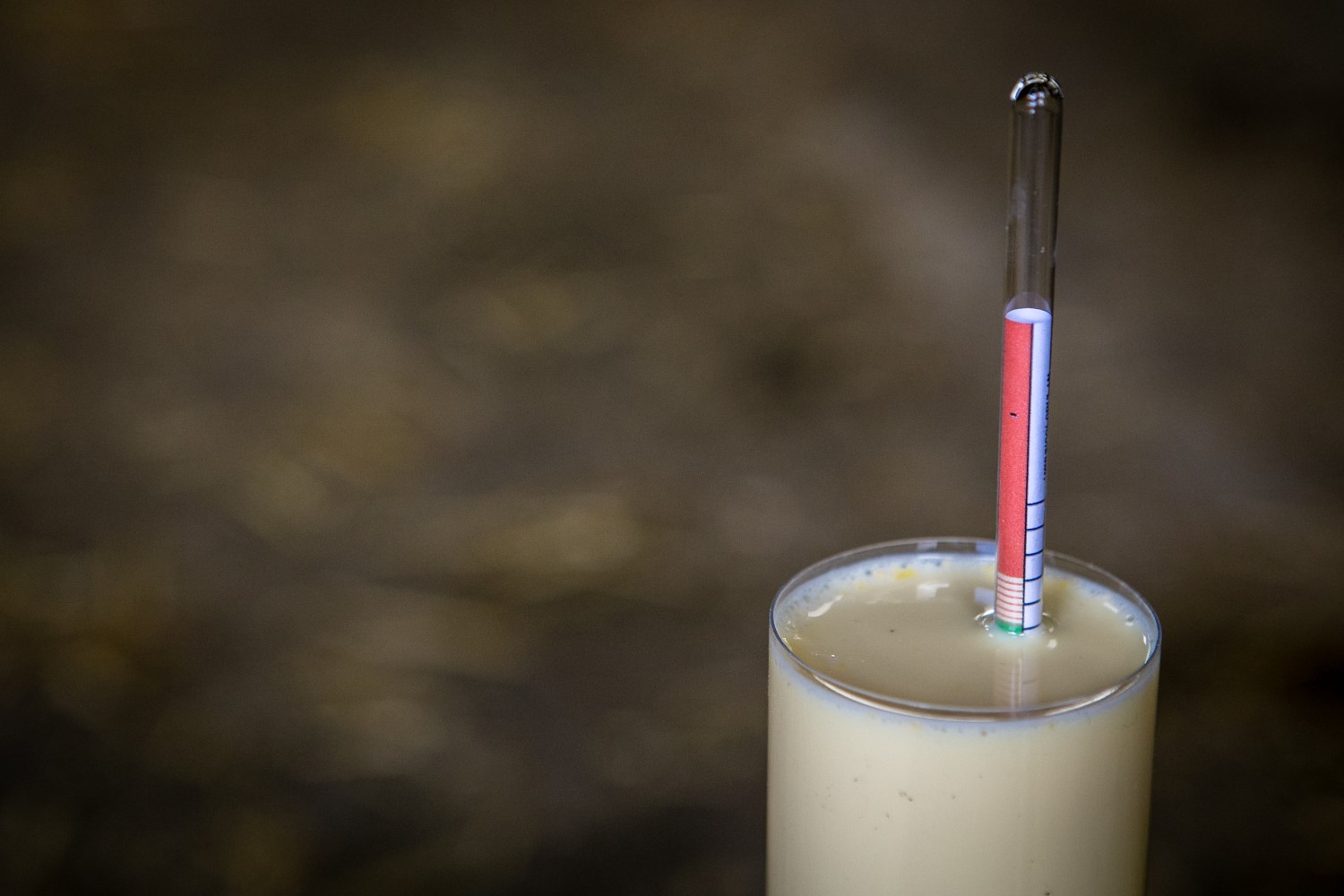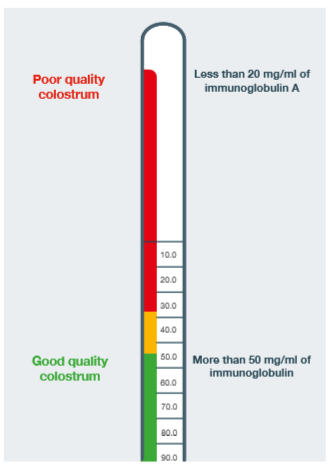- Home
- Knowledge library
- Using a colostrometer
Using a colostrometer
It is important to test colostrum quality every time you collect it. The results help you decide whether the colostrum is good enough to be fed, stored, or needs to be discarded. You can use a colostrometer to do this.
Check the colostrometer is free from any visual dirt and contaminants such as manure. Also check for any cracks or breaks in the glass. You will need:
- Clean colostrometer
- Sterilised jug
- Colostrum at room temperature
- Measuring cylinder tall enough to allow the colostrometer to float
How to use a colostrometer
Follow our step-by-step advice on using a colostrometer to test the quality of colostrum from your dairy cows.
- Use a clean dump bucket and then transfer the colostrum to a clean bucket with a lid.
- Take a sample of the colostrum, using a sterilised jug.
- Pour the colostrum into the measuring cylinder.
- The colostrum should be tested at a fixed temperature. Ideally, this is at room temperature of 22ºC – not body temperature or straight from the refrigerator.
- There should be no froth on the colostrum.
- The colostrometer should be floated in the colostrum, as shown in the photo below. Leave for 1 minute before taking a reading.

Taking a reading from a colostrometer
Read the value at the level at which the colostrometer is floating at the surface of the colostrum.
Readings in the green zone indicate good quality (more than 50 mg/ml of immunoglobulin) – this colostrum can be used or stored.
Readings in the red zone indicate poor quality (less than 20 mg/ml of immunoglobulin) – this colostrum should be discarded.
Readings in the amber zone indicate marginal quality.

Useful links
Testing colostrum
If you would like to order a hard copy of the Calf management guide, please contact publications@ahdb.org.uk or call 0247 799 0069.

